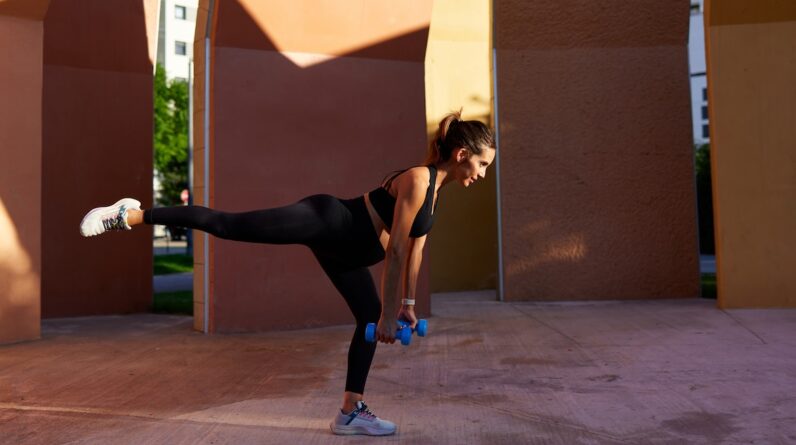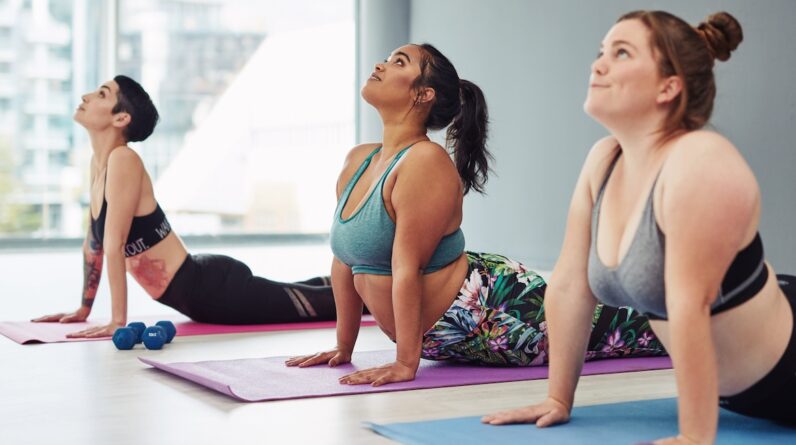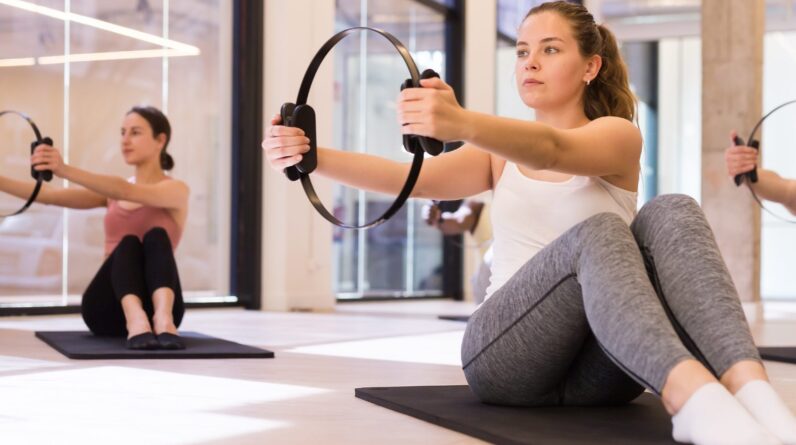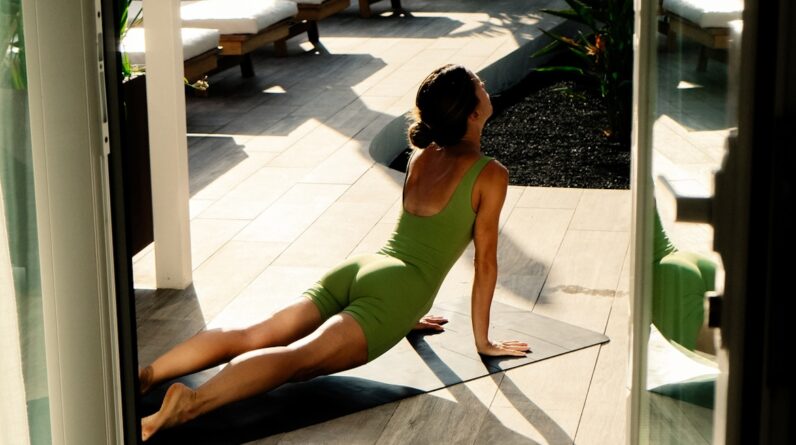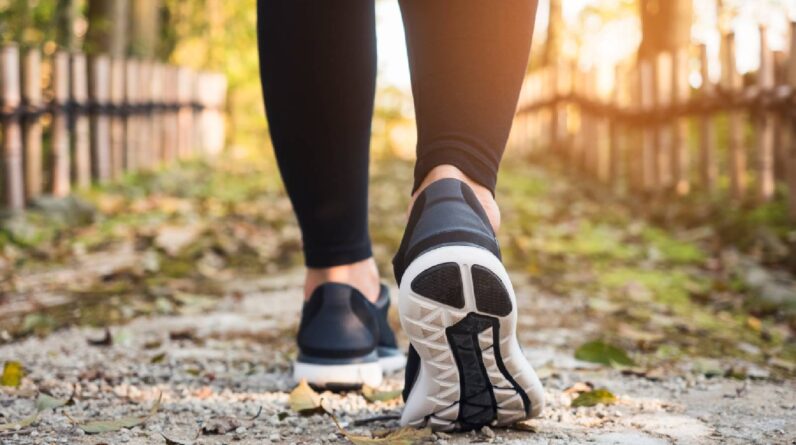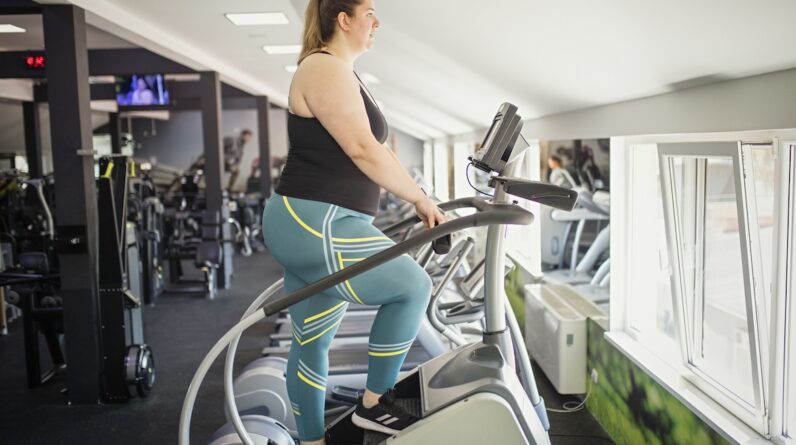
When it comes to spin bikes vs. stair climbers, they both offer benefits for your legs and your heart. However, the one you choose may be influenced by your fitness level or certain underlying conditions—and it’s important to know the pros and cons of each.
In the debate between spin bikes vs. stair climbers, here are the muscles both machines work, who each may be best for, and how to customize your workout.
Spin bikes
The low-impact spin bike is a popular choice for those who have joint issues or are recovering from injuries. Because you’re in a seated position as you pedal, there’s less stress on your knees, hips, and ankles compared to other types of cardio workouts.
“They can also be a time-efficient workout for people with busy schedules who may only have a half hour to work out because you can control the intensity and get a great sweat in a short amount of time,” says Stacy Orsborn, CPT, co-founder and president of fitness at VICTRESS MVMT, a fitness training facility in Lincoln, Nebraska.
However, being low-impact doesn’t mean a spin bike won’t sculpt muscles. This workout still targets a number of muscles that will define your legs.
Muscles worked
While spin bikes largely activate your lower half, they also engage your core and lower back muscles to keep you stable throughout your workout.
The spin bike works these muscles:
- Quadriceps
- Hamstrings
- Calves
- Glutes
- Core muscles
And of course, your heart muscle will also get fired up with this cardio workout. Indoor cycling has been shown to improve heart and lung health, blood pressure, cholesterol levels, and body composition (your proportion of muscle to fat), per a 2019 review in the journal Medicina.
“Spin bikes are excellent for all fitness levels—offering a low-impact, cardio-focused workout,” says Chris Pruitt, CPT, CEO of WorkoutHealthy.com, a gym equipment company. “They’re ideal for those looking to improve heart health and endurance.”
Pros
Spin bikes are great for fitting in a quick cardio and leg strengthening workout when you’re short on time. They’re also easy to individualize your spin workout.
“The adjustable resistance allows for easy customization of intensity,” Pruitt says.
That said, spinning doesn’t have to be your main workout. You can still enjoy its benefits even if you start or end your workout with a spin session.
“The pros of a spin bike specifically for a cool-down are that it improves circulation and helps with muscle recovery,” Orsborn says.
And of course, spinning is a great option for building your strength and endurance with a low-impact workout. In fact, using stationary bikes lowered pain and improved function in patients with knee osteoarthritis, per a 2021 review published in the journal Clinical Rehabilitation.
Cycling also moves your legs through their range of motion, encouraging the production of joint-lubricating synovial fluid, per the Arthritis Foundation.
Cons
While the spin bike can certainly strengthen your legs and even the core, your upper body might miss out.
“With the spin bike, there is limited upper body engagement because it primarily focuses on lower body muscles,” Pruitt says. “There’s also potential for overuse injuries, because the repetitive motion can lead to issues if not varied.”
The position you’re in when cycling on a spin bike might also cause pain.
“You can experience discomfort—or saddle soreness—and pelvic floor tension,” Orsborn says.
It’s not unusual to experience tenderness around your upper thighs, crotch, and butt area after you cycle, especially if you haven’t done it in a while, according to Peloton. Making sure your saddle is level and at the appropriate height, wearing padded bike shorts, adding a seat cover, and taking days off can help prevent a sore bum.
Factors like friction and sweat can also cause saddle sores, which pop up from infected hair follicles and can look like chafing or pimples around the genital area. Antibacterial cream and taking breaks may help, but talk to a doctor if the sores worsen or last more than a week.
Finally, some people find adjusting spin bikes (the seat, handlebars, etc.) to be tedious. If you don’t like fiddling around with equipment, this may not be the best workout for you.
How to customize it
You can power your cycling workout up or down based on your workout goals by changing the bike’s settings.
“Adjust the resistance to increase or decrease workout intensity,” Pruitt says. “You can incorporate high-intensity intervals for a more challenging workout.”
One isn’t necessarily better than the other: Both high- and low-resistance settings can help you reach specific fitness goals.
“Higher resistance is similar to an uphill ride and engages more muscles, whereas lower resistance lets you pedal faster and helps with cardio endurance,” Orsborn says.
You can also customize your spin workout by shifting through different speeds.
“Integrate intervals of sprints where you pedal as fast as you can for a short period of time, and then spend the rest at a slower, more consistent speed to focus on endurance,” Orsborn says.
It’s also important to make sure your bike is properly adjusted for your body to prevent injury. The seat should be about level with your hip bone when you’re standing, per the Hospital for Special Surgery. The handlebars should be at a height that allows your elbows to be slightly bent and your shoulders to be away from your ears as much as possible.
You can also try different riding positions (such as seated, standing, and hovering) to test how each one feels—and which gives you the best workout.
“This will also engage different muscle groups and keep you engaged, mentally and physically, during your ride,” Orsborn says. “For example, a seated position helps with quadriceps and glutes, whereas standing positions engage the hamstrings and calves.”
“Spin bikes are excellent for all fitness levels—offering a low-impact, cardio-focused workout. They’re ideal for those looking to improve heart health and endurance.” —Chris Pruitt, CPT
Stair climbers
Don’t be intimidated by this machine’s tall stature—while it is a somewhat more difficult workout, it can be an effective way to fit in both cardio and leg sculpting.
“Similar to the bike, stair climbers are great for people with limited time who need a quick and productive workout,” Orsborn says. “Also, they are good for anyone who wants to slowly build a routine and have full control over their setting.”
By changing various aspects of your climb, you can gradually incorporate harder intervals for increased benefits as your endurance improves.
Muscles worked
The stair climber works the same leg muscles as the spin bike, plus your core muscles that engage for stability.
When you use the stair climber, these muscles are activated:
- Quadriceps
- Hamstrings
- Calves
- Glutes
- Core muscles
Similar to the spin bike, the stair climber also offers a fantastic cardio workout for your heart.
“Both stair climbers and bikes improve heart health, increase stamina, burn calories, and—depending on your diet—create the calorie deficit needed to lose fat all over the body, including the legs,” Orsborn says.
Pros
Another excellent choice for building lower-body strength, the stair climber offers a more vigorous workout that may pack a greater punch than spin bikes.
“It burns a high number of calories due to the intensity of the workout,” Pruitt says. “It also mimics real-life movements, improving overall functional fitness.”
Because you’re likely accustomed to scaling stairs, the stair climber may also be more intuitive to use, while providing many of the same benefits as a spin bike.
“It’s simple to use and can engage multiple muscle groups all at once,” Orsborn says. “It builds lean leg muscle and improves heart health.”
Like the spin bike, it’s also a low-impact workout with minimal impact on your joints.
“For those without any pre-existing issues, stair climbers are a great way to build muscles in the knees, legs, and back,” Orsborn says. However, if you already have pain in these areas, the climber could make them worse, Orsborn adds.
In general, daily stair climbing is associated with a lower risk of metabolic syndrome (a cluster of symptoms including high blood pressure, unhealthy cholesterol levels, high blood sugar, and belly fat), per a 2021 study in BMC Public Health.
Cons
Any activity that involves repetitive movements, like stair climbing or cycling, can lead to boredom—which may make it difficult to stay consistent with your workouts.
Plus, stair climbers can exacerbate certain underlying issues.
“If you have knee or lower back pain or injuries, a stair climber can worsen the symptoms,” Orsborn says. “Poor posture and form on a stair climber can also make it harder to build new muscle or cause new strains on the body.”
While stair climbers may be lower impact than jumping or jogging, they’re not as low-impact as cycling.
“Stair climbers are higher impact than spin bikes, so they can be tough on the knees and joints if not used correctly,” Pruitt says.
Finally, because they’re a higher-calorie workout, they may be less accessible for beginners than spin bikes.
“Stair climbers are better suited for those with a baseline level of fitness,” Pruitt says.
How to customize it
The level of customization will depend on the type of stair climber you’re using, but there are typically several options you can choose from to fine-tune your workout.
“You can vary your climbing motion by increasing or decreasing the resistance and speed,” Orsborn says.
Many climbers allow you to change the step height to mimic an uphill or downhill climb. Incorporating this into your workout can help activate more muscles and build endurance.
By adjusting resistance, speed, and step height, you can also plan interval periods into your workout, in which you push yourself harder for short bursts of time.
“Slowly work these into your workout to avoid injury or overstraining yourself,” Orsborn says. “Be sure to slow down or rest between high intensity cycles.”
Beyond adjusting the machine itself, you can also carefully change how you step.
“Switch the step position during different intervals, like skipping a step or side stepping,” Pruitt says. Side stepping involves leading with the same foot (i.e. leading with your right foot for each step, then repeating on the left).
“For those without any pre-existing issues, stair climbers are a great way to build muscles in the knees, legs, and back.” —Stacy Orsborn, CPT
Spin bikes vs. stair climbers for sculpted legs
One note to keep in mind: To truly sculpt your legs, it’s important to incorporate exercises that make use of progressive overload, which involves gradually increasing the weight, frequency, or number of repetitions in your routine to build lean muscle.
“For sculpted legs, you’re going to want a balanced fitness program that combines strength training and cardiovascular exercises,” Orsborn says. “While spin bikes and stair climbers are great for burning calories and cardio, progressive overloading training is crucial for actually toning the muscles and increasing your metabolism.”
Progressive overload also speeds up your metabolism over time, helping you lose fat. You can customize your spin bike or stair climber routine to incorporate progressive overload elements, or you can use them to start or end other progressive overload workouts such as lunges or squats.
“I recommend using spin bikes or stair climbers as a warm-up or cool-down activity, and making progressive overload strength training your primary workout,” Orsborn says.
Spin bikes vs. stair climbers: the bottom line
Both spin bikes and stair climbers can be great options to sculpt your legs and fit in an effective cardio workout. However, which activity you choose depends on your level of fitness, any underlying conditions you may have, and what you want to accomplish.
“Both spin bikes and stair climbers are effective for sculpting legs, but the best choice depends on your fitness level and personal goals,” Pruitt says.
Spin bikes are excellent for all fitness levels, offering a low-impact, cardio-focused workout. Stair climbers are more intense, providing high-calorie burn and strength-building benefits, making them ideal for those with intermediate to advanced fitness levels.
When it comes to spin bikes vs. stair climbers, whichever one you choose, keep in mind that you’ll need to incorporate progressive overload strength training to sculpt your legs most effectively.
If you have questions about how to use each type of machinery, or identifying which is best for you, chat with a certified trainer who can guide you.
Well+Good articles reference scientific, reliable, recent, robust studies to back up the information we share. You can trust us along your wellness journey.
- Chavarrias M, Carlos-Vivas J, Collado-Mateo D, Pérez-Gómez J. Health Benefits of Indoor Cycling: A Systematic Review. Medicina (Kaunas). 2019 Aug 8;55(8):452. doi: 10.3390/medicina55080452. PMID: 31443139; PMCID: PMC6722762.
- Luan L, Bousie J, Pranata A, Adams R, Han J. Stationary cycling exercise for knee osteoarthritis: A systematic review and meta-analysis. Clin Rehabil. 2021 Apr;35(4):522-533. doi: 10.1177/0269215520971795. Epub 2020 Nov 10. PMID: 33167714.
- Whittaker AC, Eves FF, Carroll D, Roseboom TJ, Ginty AT, Painter RC, de Rooij SR. Daily stair climbing is associated with decreased risk for the metabolic syndrome. BMC Public Health. 2021 May 14;21(1):923. doi: 10.1186/s12889-021-10965-9. PMID: 33990186; PMCID: PMC8122558.


